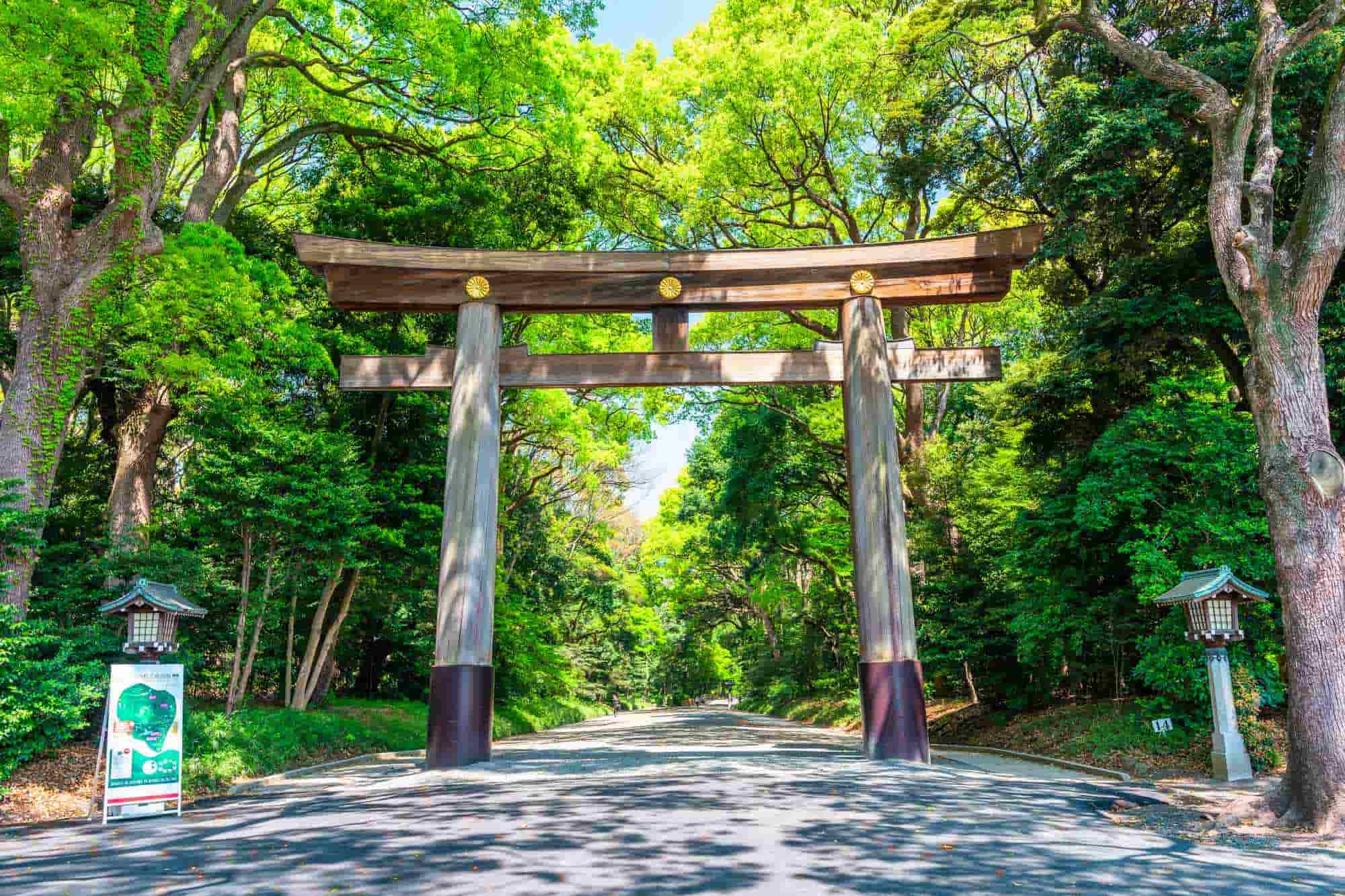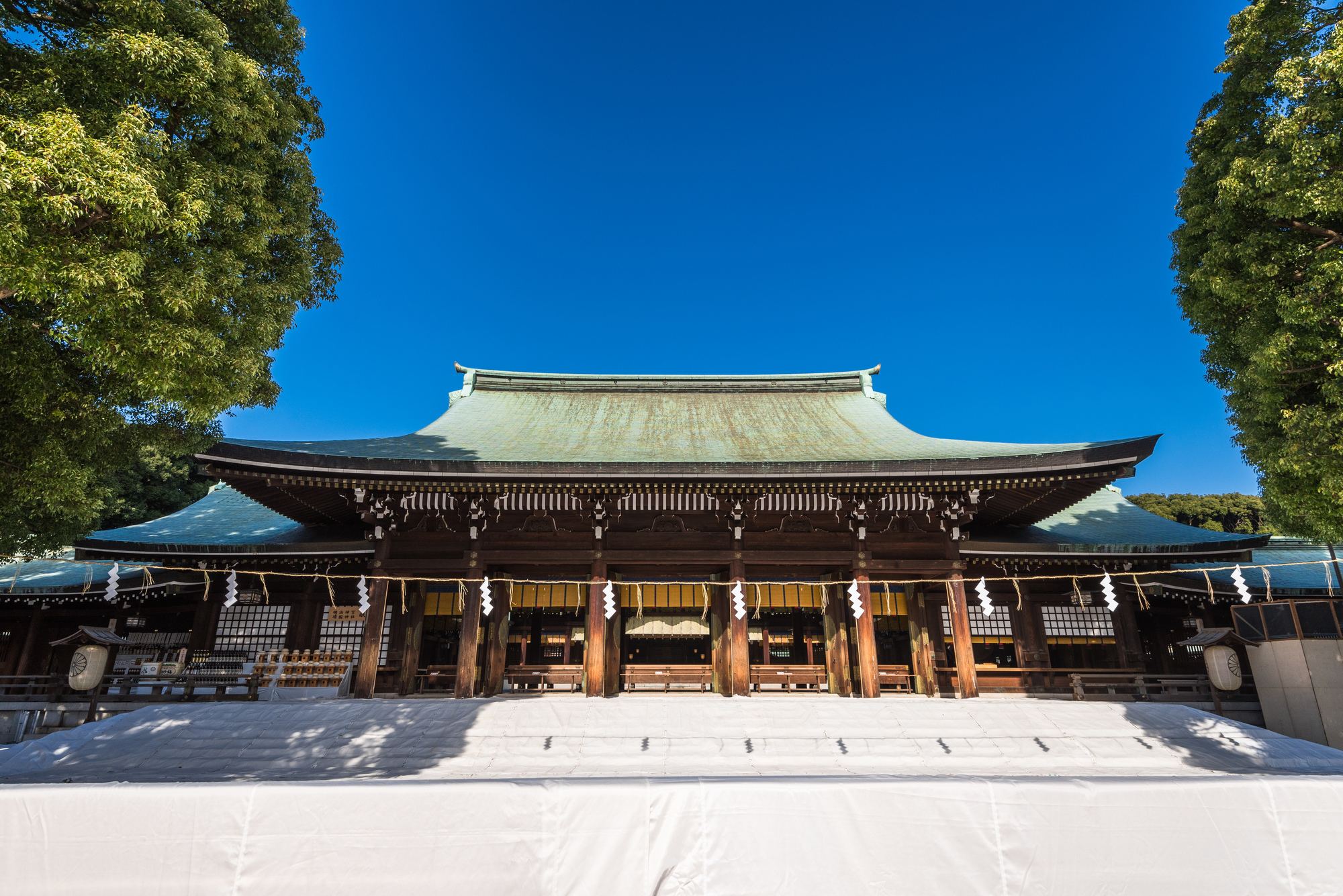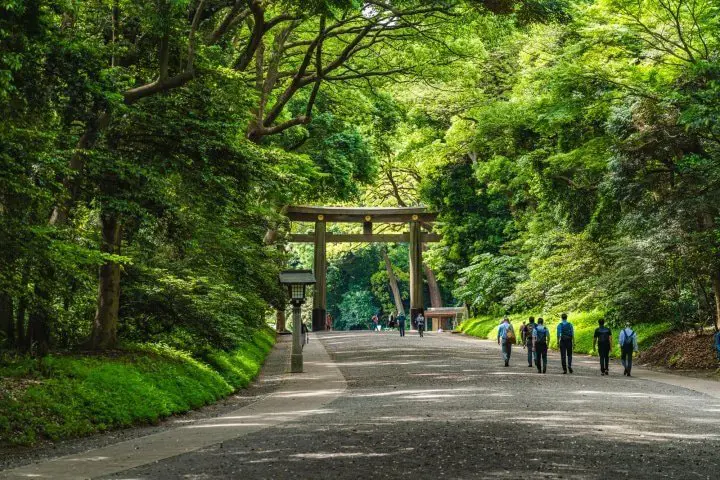


Meiji Jingu
A tranquil forest oasis in the heart of bustling Tokyo, dedicated to a modern emperor.
A remarkable shrine dedicated to the deified spirits of Emperor Meiji and Empress Shoken, who guided Japan through its rapid modernization. The shrine is a striking contrast to the hyper-modern city that surrounds it.
History of the Shrine
Unlike shrines dedicated to mythological figures, Meiji Jingu honors historical ones who shaped modern Japan. Following the death of Emperor Meiji in 1912 and Empress Shoken in 1914, the Japanese people wished to commemorate their role in the Meiji Restoration, a period of immense transformation that saw Japan evolve from a feudal society into a modern world power. A national movement led to the establishment of the shrine, which was completed in 1920.
The most astonishing aspect of the shrine is its forest. This vast, dense woodland was not a natural feature of the landscape. It was entirely man-made, created by planting over 100,000 trees donated by people from all over Japan and its overseas territories. This carefully planned forest, designed to become a self-sustaining evergreen ecosystem, stands as a powerful living monument to the public's reverence for the Emperor and Empress. Though the shrine buildings were destroyed during World War II, they were rebuilt through another public fundraising effort, symbolizing the enduring connection between the imperial couple and the people.
The Enshrined Kami
Emperor Meiji (1852-1912) was the 122nd Emperor of Japan, who presided over the Meiji Restoration. His reign was a pivotal period of rapid industrialization, political reform, and cultural exchange with the West. He is venerated not as a mythological god, but as a great leader who guided the nation with wisdom and strength, symbolizing the spirit of progress and the successful modernization of Japan.
Empress Shoken (1849-1914) was his consort, known for her intelligence, compassion, and tireless work in promoting women's education and establishing the Japanese Red Cross Society. She was a model of traditional virtues combined with a modern, global perspective. Together, they are worshipped as kami who represent the harmonious blending of old and new, and as guardians of the nation's well-being and continued progress.
What to See
The approach to the shrine is through a wide, tranquil path under the canopy of the forest, which effectively silences the noise of the city. Visitors pass under massive wooden torii gates, the largest of their kind in Japan, made from ancient cypress trees. Along the path, you'll find a striking display of decorated sake barrels ('kazaridaru') offered by brewers across Japan as a sign of respect, opposite a similar display of wine barrels from Burgundy, France, symbolizing the Emperor's embrace of Western culture.
The main shrine complex is a beautiful example of the 'Nagare-zukuri' style, characterized by its elegant simplicity and use of natural materials like copper and cypress wood. It is a space of serene dignity rather than ornate decoration. Adjacent to the main grounds is the Inner Garden ('Gyoen'), which was a favorite walking spot for the Emperor and Empress and is famous for its beautiful iris beds in June.
Major Festivals
The shrine's main festival is the 'Autumn Grand Festival' held around Emperor Meiji's birthday on November 3rd (now a national holiday called 'Culture Day'). The festival features spectacular performances of traditional arts as offerings to the kami, including 'Yabusame' (horseback archery), 'Bugaku' (courtly dance and music), and Noh theatre. New Year's ('Hatsumode') at Meiji Jingu is the most popular in Japan, with millions of visitors coming to offer their first prayers of the year in the first few days of January.
Support Meiji Jingu
Your participation helps preserve this sacred site for future generations. Every digital offering contributes to real shrine preservation efforts across Japan.
By making an offering, you become part of a global community honoring Japanese spiritual traditions and supporting the cultural heritage that has been cherished for centuries.